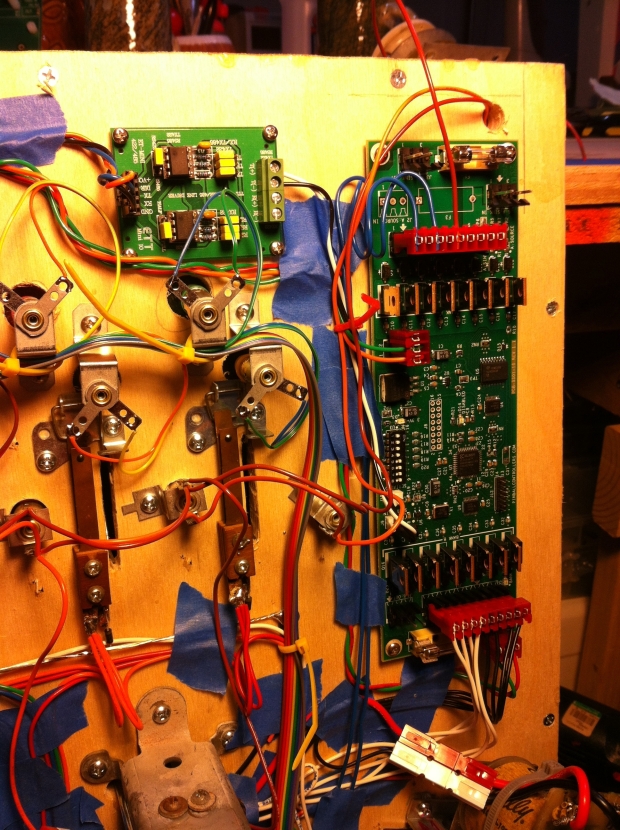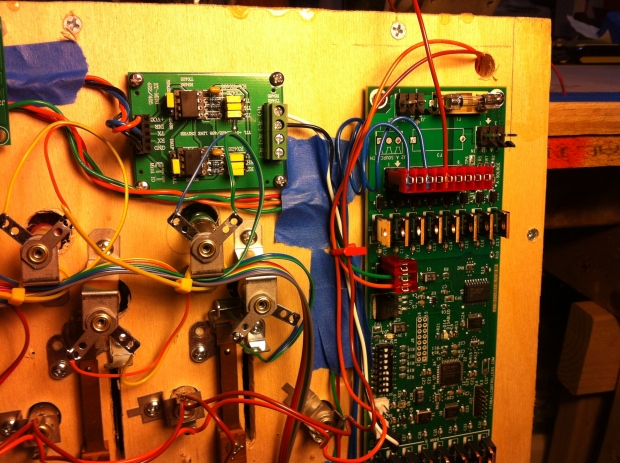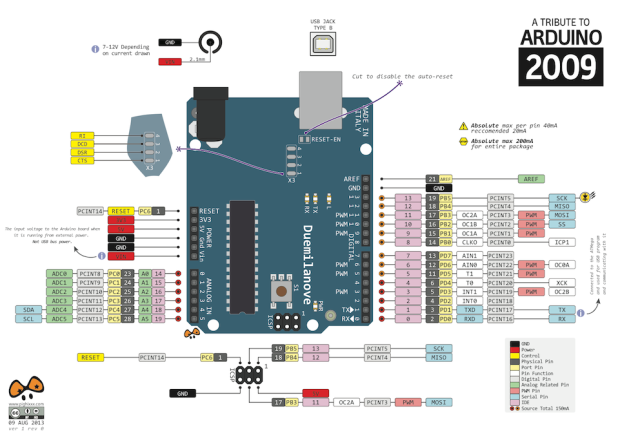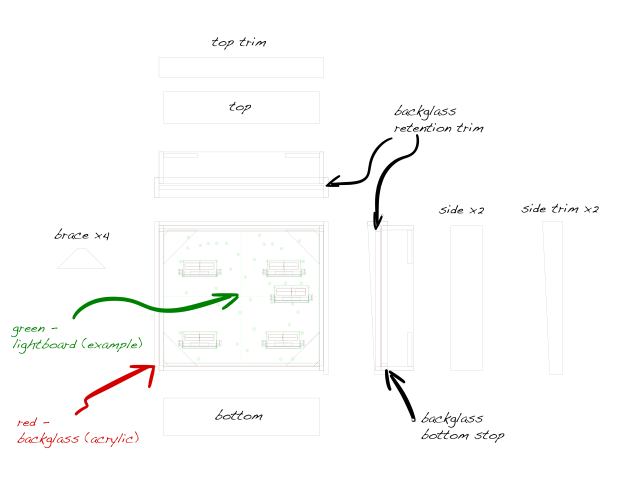This is a follow-up to the original post on controlling solenoids with a Pinball Controller’s “Power Driver 16” board. I’m adding some photos to aid with the wiring and assembly, as well as giving a few troubleshooting tips.
Click through to see a larger image. This is an overview of the Power Driver 16 and Mini RS-485 Master, showing the inputs, Mini Master output, and connection to the solenoid driver.
Click through to see a larger image. This detail shot shows the inputs to the Mini Master: Orange wire is Power (5V), Blue wire is TX from the Arduino, Black is GND. The outputs of the Mini Master are: White for TX(+) and Black for TX(-).
This is a detail showing the Mini Master output coming in on the Pinball Controller’s Power Driver 16 port labeled J9. Pin one is Serial +, which gets the White TX(+) wire, and pin 2 is Serial-, which gets the Black TX(-) wire from the Mini Master.
Click through for full size image. This shows the Arduino SPI interface to the Mini Master RS-485 converter. It is a three-wire connection, with 5V power, signal and ground.
SPI interface uses the GND, MOSI and 5V pins when connecting to the Mini Master RS-485 converter.









